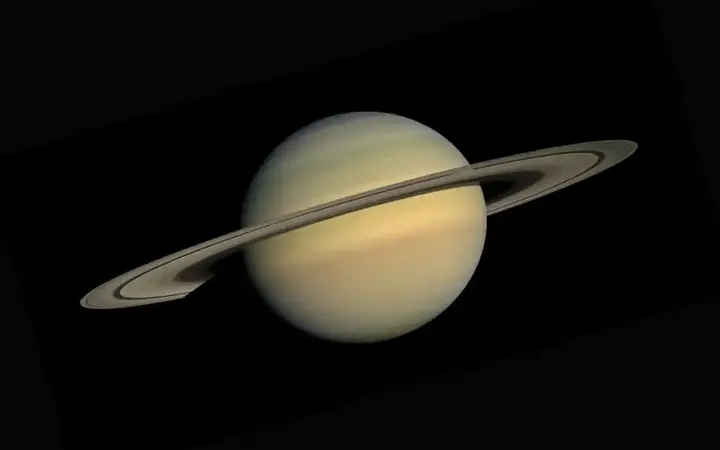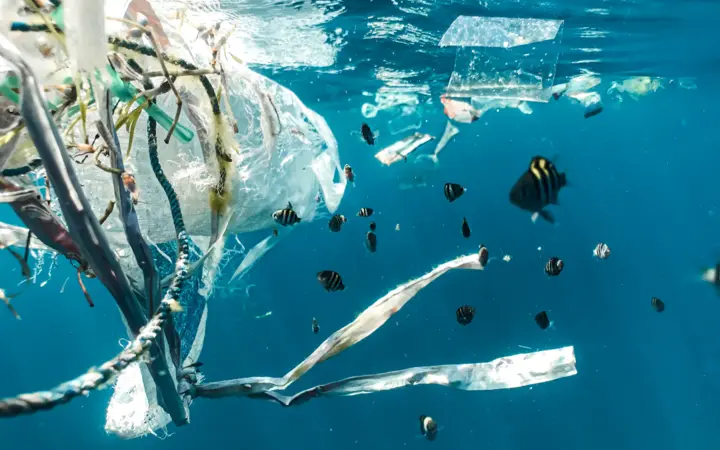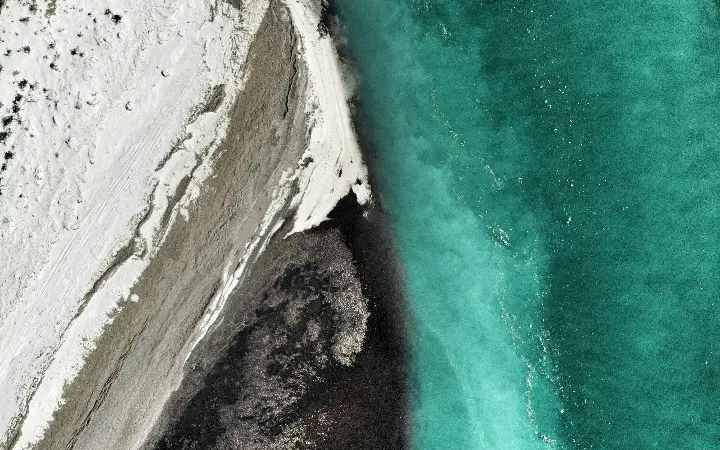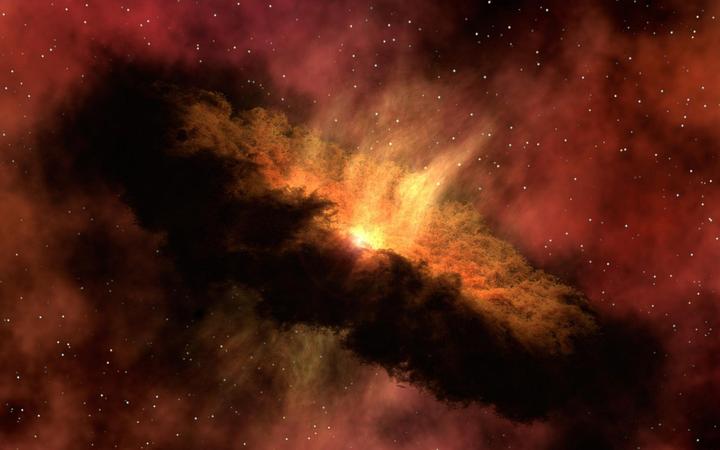The Science Behind the Fireworks: Detecting Magic in the Sky

In the modern world, fireworks have become one of the most prominent entertainment shows that attract thousands of people. The magic of fireworks in the sky captures the eye and raises eyebrows and admiration in everyone. But have you ever thought about the science behind these great shows? In this article, we will reveal the magic that goes on in the background behind fireworks and how they are produced.
Show key points
- Fireworks originated in ancient China in the seventh century BC and have since evolved into a global symbol of celebration and entertainment.
- Over centuries, scientific and technological advancements have transformed fireworks from simple flame-based devices into complex visual spectacles.
- The vibrant colors in fireworks are produced through chemical reactions involving specific compounds like ferrous salts and lead oxides under high temperatures.
- ADVERTISEMENT
- Precise physics and mathematics are employed to control the movement, shapes, and timing of firework explosions in the sky.
- Modern fireworks increasingly incorporate environmentally friendly materials and alternative fuels to reduce their negative ecological impact.
- Despite their appeal, fireworks pose health and safety risks such as fires, physical injuries, and hearing damage if not handled properly.
- The dazzling displays we enjoy are the result of a seamless combination of science, chemistry, engineering, and artistic creativity working behind the scenes.
History of fireworks: how long have they been used and how have they evolved?

The use of fireworks dates back to ancient China around the seventh century BC, when people used fireworks in religious and cultural ceremonies. Since then, fireworks have spread around the world and been used in a wide range of events and celebrations.
Recommend
Throughout the ages, fireworks have undergone tremendous development in design and technology. Initially, fireworks consisted of the simplicity of the flame and the burning materials wrapped around it. But with the development of science and technology, different materials and advanced techniques were used to produce the amazing visual effects we see today.
In the Middle Ages, there was a great advance in the fireworks industry, as new ways were discovered to achieve multiple colors and a stunning shape. In the eighteenth century, materials used in fireworks, such as gunpowder, cork and paraffin, were discovered, leading to a major development in fireworks.
In modern times, with rapid technological advancement, fireworks have become more charming and dazzling. Radiant colors, intricate geometry and simultaneous explosions were used to produce fireworks displays with a magnificent artistic appearance. Modern fireworks are a unique blend of science, art and technology, combining the aesthetic of colors with the power of explosions.
The chemistry behind fireworks: what materials are used to make them?

In the world of chemistry, fireworks use a variety of carefully used materials to achieve the amazing effects we witness. These include explosives that generate explosions, oxidants that promote flames, and colored chemicals that give us those beautiful colors that the eyes enjoy.
One of the main substances used in fireworks is black powder, a mixture of coal, potassium sulfate and ammonia. This substance is used as a basic explosive to produce the powerful explosions that we see in fireworks.
In addition, oxidizing minerals such as potassium bromate, nitrate and chlorate are used to enhance the flame and achieve amazing color effects. These substances react with added colored chemicals such as ferrous salt, pink sulfur and lead oxide to produce those beautiful and amazing colors that add a special charm to the night sky.
We should also mention that modern fireworks use advanced nanochemistry techniques, where modified nanoparticles are used to achieve more exciting and beautiful effects. These technologies are a modern and interesting addition to the continuous development of fireworks.
The physics and geometry behind the fireworks display: how are shape, colors and explosions controlled?

When we watch a fireworks display, we are amazed by the beautiful explosions and the multi-coloured ones that light up the night sky. But have you ever wondered how the shape, colors and explosions of fireworks are controlled? There is no doubt that physics and engineering are behind this amazing thing.
By studying physics, scientists learn how to move and orient objects in space. When it comes to fireworks, physics plays an essential role in determining the directions and movement of rides in the sky. For example, when fireworks are launched into the air, the principle of driving force and gravity is used to control their movement, altitude and direction. Fireworks are precisely guided using a complex set of calculations and designs to achieve spectacular displays that we cannot see.
As for the bright colors that adorn fireworks, chemistry and physics work together to achieve this. Chemicals used in fireworks contain different compounds that react when exposed to heat and cause the release of different colors. The color of the pyrotechnic depends on the type of chemical compound used and its temperature. By controlling the temperature and type of chemical compound, our bright color combinations are realized.
For fireworks explosions, they rely on the elaborate distribution of explosive materials in the toys. Determining the right time for blast games requires high accuracy and accurate synchronization between different explosive elements. The size and exact time of explosions are precisely determined by complex geometric mechanisms, based on the principles of physics and mathematics.
Eco-fireworks: can they be made more environmentally friendly?

Fireworks have their beauty and charm in the sky, but have you ever thought about the environmental impact they have? Can fireworks be designed in ways that make them more environmentally friendly? Let's dive into the world of environmental fireworks and learn about new technologies and materials that can be used to achieve this important goal.
In order to make fireworks more environmentally friendly, scientists and engineers are developing several technologies and innovations. These technologies include the use of biodegradable materials, the reduction of the use of harmful substances, and the use of new fuels.
One improvement used in environmental fireworks is the replacement of chemicals that need high temperatures to be flammable with biodegradable materials. These environmental materials decompose naturally after the explosion and reduce the negative environmental impact.
In addition, researchers are developing new ways to light fireworks using the least amount of harmful chemicals. This reduces environmental pollution and improves air quality in the surroundings.
Another technique that may be used in environmental fireworks is the replacement of traditional fuels with new and environmentally friendly varieties. For example, liquefied natural gases can be used instead of fossil fuels that cause harmful air emissions.
The impact of fireworks on health and safety: what are the potential risks and how should they be addressed?

When we talk about fireworks, we cannot ignore the impact they may have on health and safety. Although we enjoy the beauty and colour of fireworks, we need to be aware of the potential hazards and know how to safely handle them.
Among the main dangers of fireworks is the danger of fires. The combustion process of fireworks involves the use of flammable materials and can therefore cause serious fires. We must take precautions when using fireworks in the right places and with appropriate fire extinguishing procedures.
In addition, fireworks may cause physical injury. Rockets and explosives may explode unexpectedly, increasing the risk of burns and wounds. Individuals should wear protective clothing, hearing shields and goggles to reduce these risks.
Fireworks are also a source of loud noise. When fireworks explode, they are accompanied by a strong sound that may affect hearing, especially for children and people with ear sensitivity. Avoid direct exposure to fireworks and stay away from them when the noise is high.
The negative impact of fireworks is not only related to people, but may affect pets and wildlife as well. Bright lights and loud sounds can confuse animals, causing stress and damage. Lighting fireworks near areas where animals live.

Using advanced science and technology, fireworks continue to innovate and evolve. Its unique visual effect attracts audiences and gives them magical and unforgettable moments. But this magic is not fleeting, but rather reflects the skill of the scientists and engineers who work behind the scenes of this joyful display. Let's enjoy fireworks with enthusiasm and passion, and in return, let's not forget the science behind this magic, which brings us the greatest magical moments in the night sky.
![]()
A book that may interest you: 52 practical rules for success
A book that might interest you - Fifty-Two Rules of Thumb for Success Without Losing Yourself more- ADVERTISEMENT
![]()
Lebanon's basketball team's success story despite economic turmoil
Lebanon’s basketball scene is thriving, with its national team and clubs like Riyadi and Hikmeh making waves internationally. Despite economic struggles, passionate support from the Lebanese diaspora keeps the sport alive, turning basketball into a powerful symbol of national pride and unity across the country and its communities abroad. more- ADVERTISEMENT
![]()
The most fascinating discoveries we have made to explore Jupiter
Jupiter’s Great Red Spot, a massive storm lasting centuries, and the mysterious, possibly liquid core make it a planet full of extremes. Its moons—especially Europa with its hidden ocean—offer exciting clues about extraterrestrial life. With Juno and upcoming missions, the future of exploring this gas giant looks thrilling. more- ADVERTISEMENT
![]()
The Genius of Nature: 8 Amazing Technological Innovations Inspired by Nature
Nature has sparked incredible inventions—from quieter express trains shaped like kingfishers to painless needles modeled after mosquitoes. Even butterfly wings help improve solar cells. These smart ideas not only improve our daily lives but also open big doors in tech and business. more- ADVERTISEMENT
![]()
Mount St. Helens blast and rebirth
Mount St. Helens, once shattered by a deadly eruption in 1980, now stands as a powerful symbol of nature's recovery. From barren ash fields to thriving ecosystems, it shows how life returns. Today, it draws visitors eager to witness Earth’s healing and learn from its remarkable transformation. more- ADVERTISEMENT
![]()
How to create a small online store for online sales?
Starting an online store is a smart move to sell your products and reach more people. Begin small, focus on unique items, choose a catchy store name, and use easy platforms like Shopify or Wix. Good design, secure payments, solid marketing, and great service are key to your store’s success. more- ADVERTISEMENT
![]()
Saving our seas: Can we remove plastic pollution?
Plastic pollution is everywhere—from oceans to our drinking water. Ocean cleanup efforts like The Ocean Cleanup aim high but also come with side effects, including harming marine life and adding to carbon emissions. The real solution? Stop single-use plastic at the source before it ever reaches the sea. more- ADVERTISEMENT
![]()
Tranquility and Beauty in Djerba Island in Tunisia
Djerba, or the "Island of Dreams," enchants with its pristine beaches and rich history. Combining the charm of the Mediterranean, its multicultural heritage, and the spirit of local life, it is an ideal destination for relaxation and adventure amidst breathtaking natural landscapes and authentic cultural experiences. more- ADVERTISEMENT
![]()
Elon Musk - mad genius or unlimited diligence?
Elon Musk, dubbed the "Real Iron Man," is a bold, creative dreamer known for his ambition to colonize Mars, controversial tweets, and strict leadership style. Loved and hated, he's a complex figure who never shies away from challenges or attention, always pushing boundaries with fearless determination. more- ADVERTISEMENT
![]()
Illuminating the Cosmos: The Spectacular Light Shows of Stellar Explosions
Stellar explosions paint the sky with mesmerizing light and immense energy, marking the dramatic end of stars. These cosmic events not only create heavy elements like gold and iron but also reveal secrets about the universe's formation. Gamma rays from these bursts shine with deadly intensity and deep mystery. more- ADVERTISEMENT





















